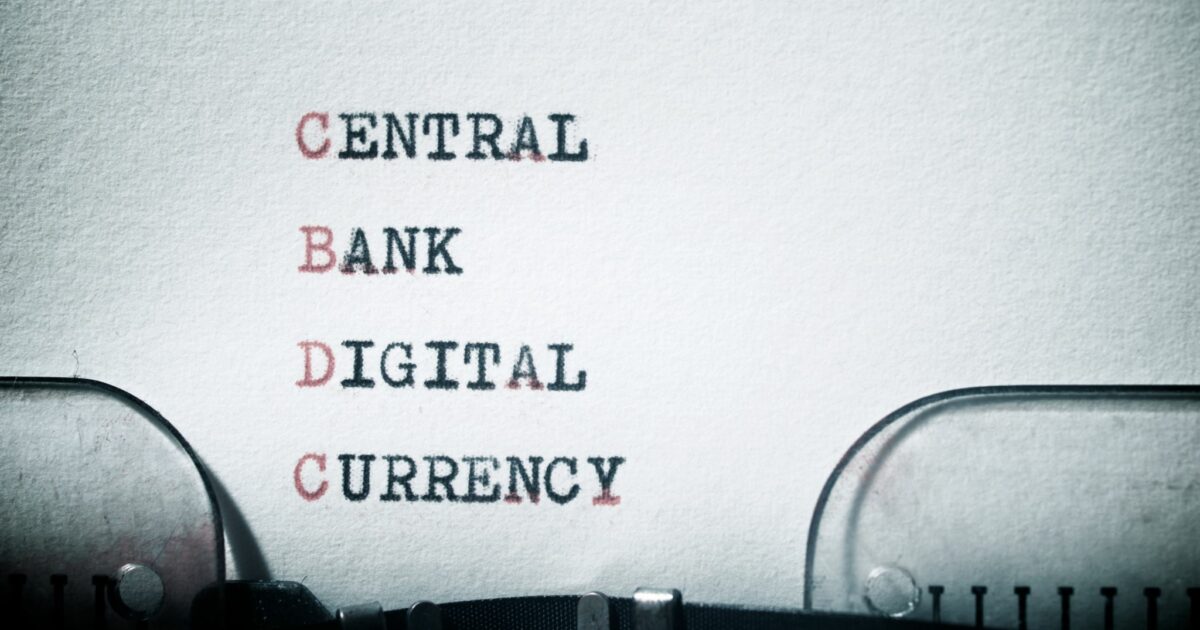
The Biden administration recently released its Policy Objectives for a U.S. Central Bank Digital Currency (CBDC) System. The objectives follow up on an earlier executive order. The President has not yet committed to launching a CBDC, but the Treasury Department has recommended proceeding, and authorized “an interagency working group to consider the potential implications of a U.S. CBDC, leverage cross-government technical expertise, and share information with partners” led by, you guessed it, the Treasury Department. The decision to put Treasury officials in charge of the CBDC working group (rather than, say, central bankers) suggests the U.S. can expect a CBDC sooner or later. Federal Reserve officials have been somewhat lukewarm on the idea.
What is a Central Bank Digital Currency (CBDC)?
A CBDC is a digital dollar issued by the Federal Reserve that individuals can use to make payments.
When considering CBDCs, it’s important to recognize the difference between actual dollars and claims to actual dollars. Americans already have access to a host of digital-dollar accounts, which are provided by private banks and other financial institutions. But the assets in these accounts are not actual dollars. They are claims to actual dollars. Actual dollars consist only of physical cash and reserve balances held by banks at the Fed. Actual dollars are issued exclusively by the Fed and, since 1971, are not claims to some underlying asset. That one typically treats the balance in her checking account as being equivalent to the corresponding amount in cash reflects the safety and soundness of the U.S. banking system. Nonetheless, a claim to actual dollars is distinct from actual dollars.
The Federal Reserve already issues digital dollars—actual dollars, not mere claims—in the form of reserve balances. These balances, however, are limited to financial institutions. Retail users cannot hold or spend reserve balances. A genuine Fed-issued CBDC would be very different in that respect. It would essentially allow Americans to open up an account at the Fed.
Competing Goals of a CBDC
The objectives offered by the administration are generally desirable in their own right, but some of the stated goals conflict with others in the context of issuing a CBDC.
Consider just two of the objectives offered. The administration wants a CBDC to improve payment systems (objective 3) and promote economic growth (objective 2). Both objectives are good things. And, at first glance, they appear to be reinforcing. A better payment system will make some transactions cheaper. As Adam Smith taught us long ago, the division of labor is limited by the extent of the market. A better payment system enables more exchange, and more exchange enables more production. Alas, a closer look at the relevant alternatives casts doubt on this rather rosy view.
It should go without saying that the benefits of improved payments will only be realized to the extent that people actually use the CBDC. It is not enough for the CBDC to offer cheap, instantaneous clearing. If no one uses it, then no benefits from the cheap, instantaneous clearing.
Here’s the problem: the more people who use the CBDC, the less people will use traditional payment mechanisms. You might be scratching your head. Isn’t this a good thing? Don’t we want people using more efficient payment mechanisms? Yes! But we probably don’t want them using more efficient payment mechanisms provided by the government.
Most people who choose to use a CBDC would have used some other payment mechanism provided by the private financial system, if a CBDC were not available. If people are holding more money in government-issued CBDC accounts, they are holding less money in private financial accounts. That’s a big deal. Private financial institutions use deposits to support their lending activities. The conventional view is that financial depth (that is, more people with more funds in the private financial system) promotes economic growth. The logic is straightforward: more deposits means more financial intermediation, and more financial intermediation means entrepreneurs can take on more productive ventures.
A CBDC risks disintermediating the private financial system. Unless one thinks that the government will channel loanable funds into valuable investment projects at least as well as the private financial system, the shift of funds from private financial accounts to government-issued CBDC accounts will result in less productive investment and, hence, lower economic growth.
The risk that CBDCs may disintermediate the private financial system is well known. Consider a recent paper by Jonas Gross and Jonathan Schiller. Gross and Shiller acknowledge “that CBDCs crowd out bank deposits.” “However,” they write, “this crowding out effect can be mitigated if the central bank chooses to provide additional central bank funds or disincentivize large-scale CBDC accumulation through low CBDC interest rates.” In other words, the government can limit disintermediation by discouraging people from using the CBDC.
Therein lies the tradeoff. To realize the improved-payment-system benefits of a CBDC, you need a lot of CBDC users. But a lot of CBDC users results in a lot of disintermediation. The government can mitigate disintermediation by discouraging so much CBDC use, but doing so also limits the improved-payment-system benefits of a CBDC.
A Better Way
It would be great if we could have fast, reliable payments that also enable the private financial system to continue providing valuable financial intermediation. And we can! The government didn’t discover the payment system improvements. Those innovations were developed in the private sector. Rather than crowding out the private sector with a CBDC, the government should let a thousand payment mechanisms bloom.



